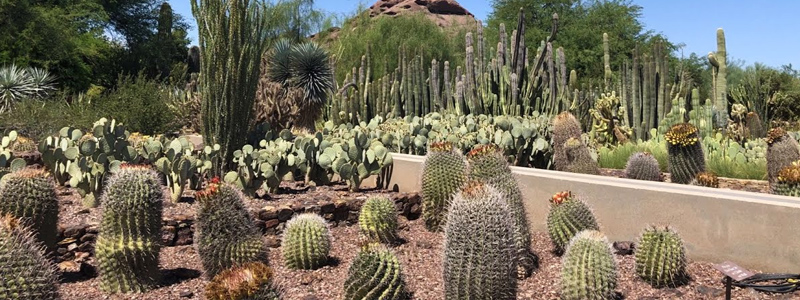Desert Botanical Garden
Imagine a place where you can gaze upon the most beautiful species of cacti in the world. Imagine being able to witness the propagation of the rarest of desert flowers. Consider the possibilities of bringing together the finest botanists, horticulturists, and geologists in one cohesive effort to create a living, outdoor museum. Fortunately for those in and around Phoenix, such a place exists not in the imagination, but among 145 red butte acres known as the Desert Botanical Garden.
Introduction to Desert Botanical Garden
The Desert Botanical Garden is spread over 140 acres and offers visitors an opportunity to explore a range of different habitats, from the Sonoran Desert to the Chihuahuan Desert and beyond. As you walk around the garden, you’ll see towering cacti, vibrant wildflowers, and other fascinating plants that have adapted to thrive in harsh desert conditions.
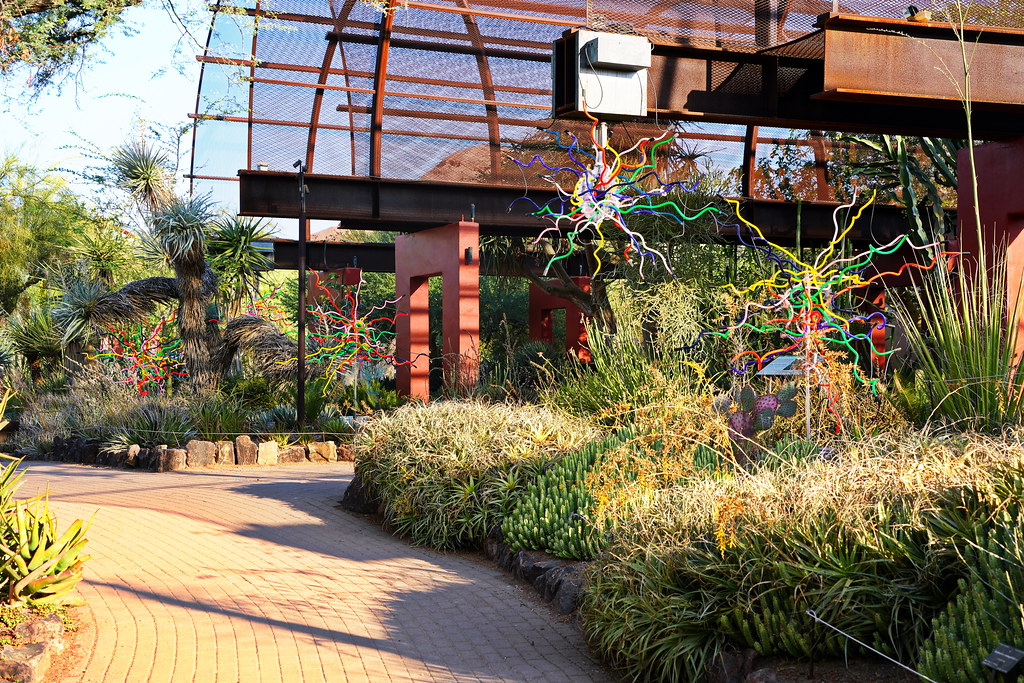
In addition to the impressive plant life, the Desert Botanical Garden is also home to a range of wildlife, from colorful birds to lizards and other desert creatures. The garden also offers a range of activities and events throughout the year, from guided tours and workshops to outdoor concerts and festivals.
Whether you’re a seasoned botanist or simply someone who appreciates the beauty of nature, the Desert Botanical Garden is a must-visit destination. With its stunning landscapes, diverse plant life, and fascinating wildlife, this garden offers a unique and unforgettable experience for visitors of all ages.
Top 5 things to do at Desert Botanical Garden
If you’re planning a visit to the Desert Botanical Garden, you won’t be disappointed with the wide range of activities and sights to see. Here are the top 5 things to do at the garden:
- Take a Guided Tour – The Desert Botanical Garden offers guided tours for individuals, groups, and school field trips. These tours offer an educational and interactive way to learn about the different plants and ecosystems of the desert.
- Attend a Special Event – Throughout the year, the garden hosts various special events, such as concerts, festivals, and holiday celebrations. These events are a great way to enjoy the garden in a different way and experience the beauty of the desert at night.
- Explore the Trail System – The Desert Botanical Garden has over 5 different trails, each with its own unique theme and ecosystem. You can explore these trails on your own or take a guided tour to learn more about the plants and wildlife you’ll encounter.
- Visit the Butterfly Pavilion – The Butterfly Pavilion is a seasonal exhibit that showcases hundreds of butterflies from around the world. Visitors can walk through the exhibit and experience the beauty of these delicate creatures up close.
- Enjoy a Meal with a View – The garden has several dining options, including a cafe and patio restaurant. Enjoy a meal with stunning views of the Sonoran Desert and the garden’s beautiful landscape.
Brief History of Desert Botanical Garden
The Desert Botanical Garden is located in Phoenix, Arizona, and it is one of the most beautiful gardens in the United States. The garden was established in 1939 by a group of passionate horticulturists, including Gustaf Stark, who had the vision to create a garden that would preserve and showcase the unique and diverse flora of the Sonoran Desert.
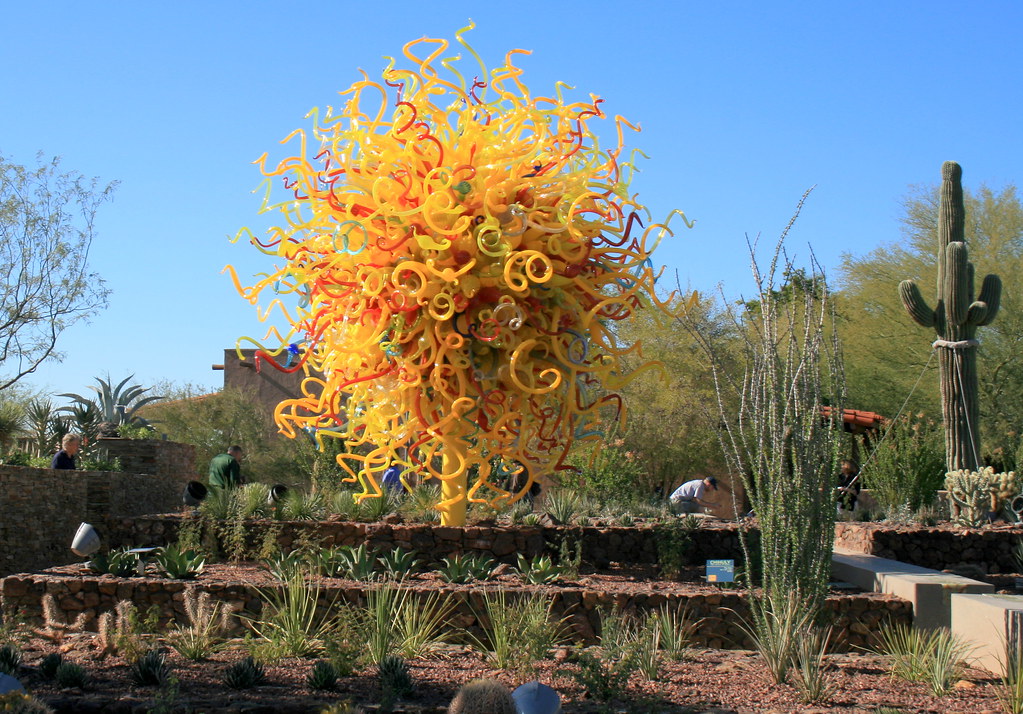
The garden was initially located on 40 acres of land donated by the Arizona Cactus and Native Flora Society, and it was later expanded to 140 acres. Today, the garden is home to over 50,000 plants, including rare and endangered species, and it attracts visitors from all over the world.
Throughout its history, the garden has undergone many changes and improvements. In the 1960s, a research department was established to study the unique adaptations of desert plants. In the 1970s, an education department was added to provide educational programs and resources to visitors of all ages.
In the 1980s, the garden underwent a major expansion and renovation, which included the construction of new buildings, gardens, and trails. Today, the garden is a world-renowned center for research, education, and conservation, and it continues to inspire people to appreciate and protect the beauty and diversity of the Sonoran Desert.
Things to See at the Garden
Located in Papago Park adjacent to the Phoenix Zoo, the Desert Botanical Garden is home to over 130 species of endangered or threatened plant life, creating a Southwestern oasis showcasing one of the world’s finest collections of desert flora. Founded in the 1940s, millions of visitors have experienced this exciting, living display of rare cacti, agave, and opuntia, with over 300,000 people a year strolling the grounds of this must-see Phoenix destination.

The Cactus Collection
The Desert Botanical Garden is world-renowned for its cactus collection and holds more than 10,000 plants representing several hundred species. Not just your average succulent garden, several of the cacti are extraordinarily rare and offer visitors a chance to view such exotic species as the Eriosyce and Echinopsis, both native to South America.
The Agave Collection
One of the most amazing plants on the planet, agaves bloom once and then die. Known mistakenly by its common name, the Century Plant, many agaves grow for fifty years or more before they bloom. As such, the rarest of the agaves are seen perhaps just once in a lifetime. Several species of agave take on high economic importance as they are used in the production of everything from sisal fibers to the manufacture of tequila. In fact, Mexico depends so heavily on the production of Agave tequilana, it results in tens of millions of dollars a year to the nation’s economy. At the Desert Botanical Garden, visitors can seize their opportunity to gaze upon 197 different kinds of agaves, including several extremely rare and native only to Arizona.
The Opuntia Collection
Known commonly as the prickly pear, opuntia is species of flowering cacti. The Desert Botanical Garden is home to over fifteen different kinds of opuntia, putting on a colorful display of these eclectic horticultural marvels. Believed to be the most complete collection of its kind, the Garden is the only place in the world where visitors and researchers alike can view so many examples of this fascinating and botanically significant plant.
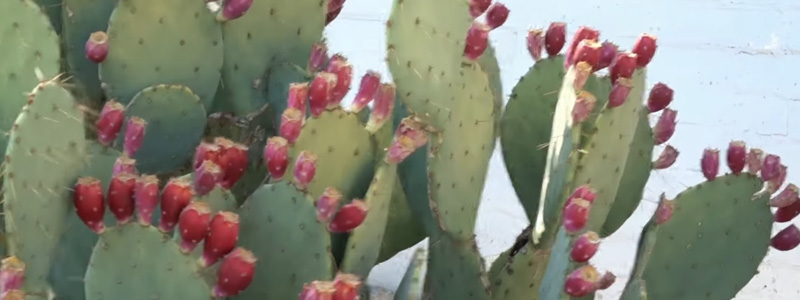
Target Kids Corner
Children will love running into Sammy Saguaro or planting some of Sammy’s Seedlings. Activities for kids abound during the cool, fall, and winter months at the Garden and range from learning about the birds and creatures that inhabit the desert landscape to discovering the joy of planting a renewable cactus.
Friday Nights on the Terrace
Looking for that slightly different night out on the town? Join music lovers from throughout the Valley each Friday night as they enjoy the sounds of live musicians against the spectacular backdrop of the Garden’s patios and natural desert beauty. The Patio Café offers fine dining options during the concerts and gourmet picnic dinners are available with advance reservations at an additional charge. Buy your tickets early for these shows, however as limited seating is available, and often the best Friday nights sell out well in advance. Tickets are available online or stop by the Garden Admission Box Office during normal operating hours.
Guided tours and other activities
Desert Botanical Garden is full of surprises and offers a range of activities for visitors to enjoy. Guided tours are a great way to learn about desert plants and their unique adaptations to the arid environment. These tours are available for individuals, families, and groups and range from basic to in-depth explorations.
If you’re interested in learning about the cultural significance of the plants, then the ethnobotany tour is the one for you. This tour explores the ways in which desert plants have been used by indigenous peoples for food, medicine, and other cultural practices. For those who want to explore the garden at night, the flashlight tours offer a completely different perspective. The guided tour takes visitors on an adventure through the nocturnal world of the desert, where they can discover the plants, animals, and other sights and sounds that come to life after dark.
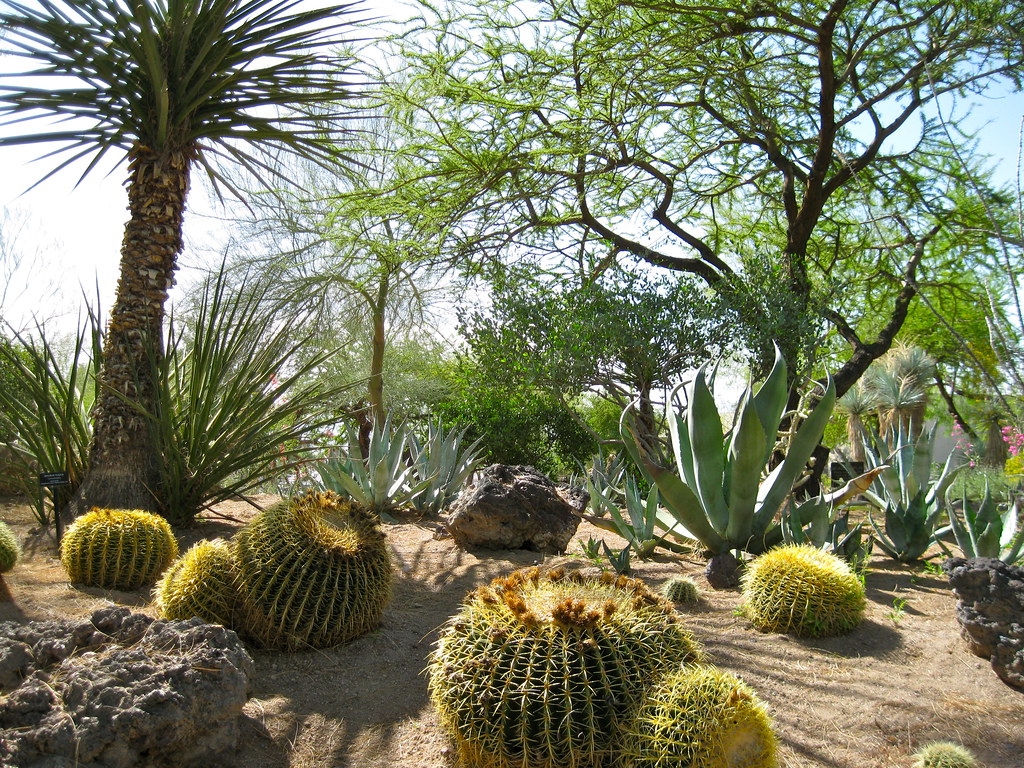
For those who prefer to explore the garden at their own pace, there are a number of self-guided tours available. Visitors can choose from a variety of trails that are suitable for different levels of fitness and interest. These trails are marked with interpretive signs that provide information about the plants and their environment.
In addition to tours, the garden also offers a range of other activities, including workshops, classes, and special events. These activities are designed to educate and inspire visitors of all ages and interests and provide an opportunity to learn more about the desert and its unique ecosystem. Whether you’re a seasoned hiker, a budding botanist, or just looking for a fun day out, Desert Botanical Garden has something for everyone.
The Garden Shop
If you have a plant lover in the family make a point to visit the Garden Shop before you pick up that special holiday or birthday gift. The best of the Sonoran desert is reflected in the countless plants, decorative items, jewelry, clothing, and gourmet foods that are available for sale. Spectacular books, from coffee table photo extravaganzas to technical reference volumes can be found at the Shop as well, making the Garden Shop your premier destination for botanical-themed gifts.
What to expect at Desert Botanical Garden
Visiting the Desert Botanical Garden is a unique and unforgettable experience. As you enter the garden, you will be greeted by a breathtaking sight of cacti, succulents, and other desert plants. The garden is home to over 50,000 plant displays, showcasing an impressive variety of desert flora from all around the world.
One of the most impressive parts of the garden is the Sonoran Desert Trail, which features plants and animals native to the Sonoran Desert. Visitors can also explore the Garden’s specialty gardens, including the Wildflower Garden, the Agave Garden, and the Cactus and Succulent Galleries.
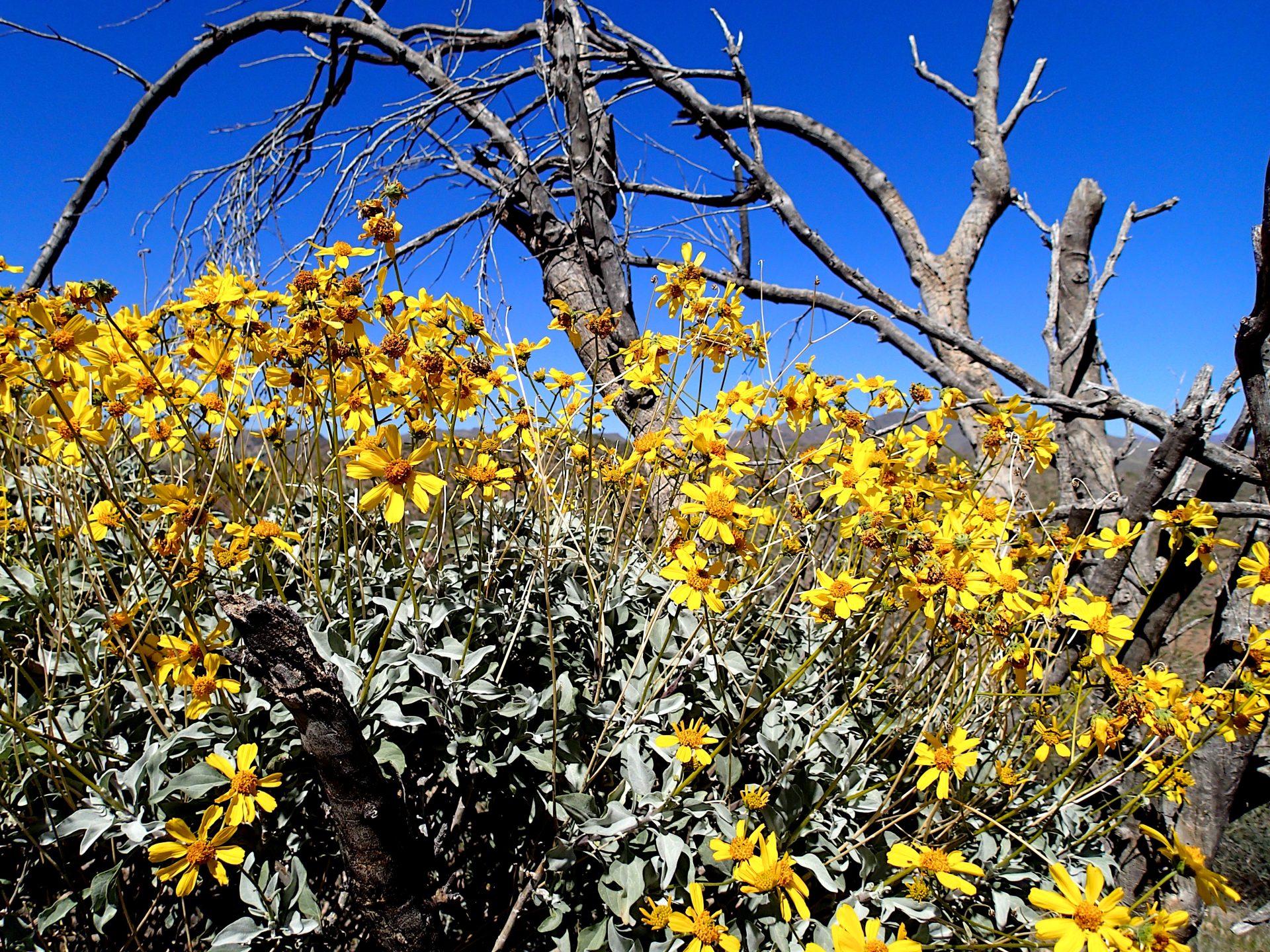
The Garden also features seasonal exhibits and events, showcasing the beauty of the desert in different ways. One popular event is the Las Noches de las Luminarias, where the garden is illuminated by thousands of luminarias, creating a magical atmosphere.
In addition to the plant life, the Desert Botanical Garden is also home to a variety of wildlife, including birds, reptiles, and insects. Visitors may spot roadrunners, lizards, and even hummingbirds while exploring the garden.
Dining options at Desert Botanical Garden
After exploring the Desert Botanical Garden, you might work up quite an appetite. Luckily, there are dining options available within the garden itself.
Gertrude’s Restaurant is an award-winning restaurant located on-site, offering fresh and seasonal dishes made with locally sourced ingredients. The restaurant has both indoor and outdoor seating options with stunning views of the garden. It’s a great place to relax and enjoy a meal after a long walk through the garden.
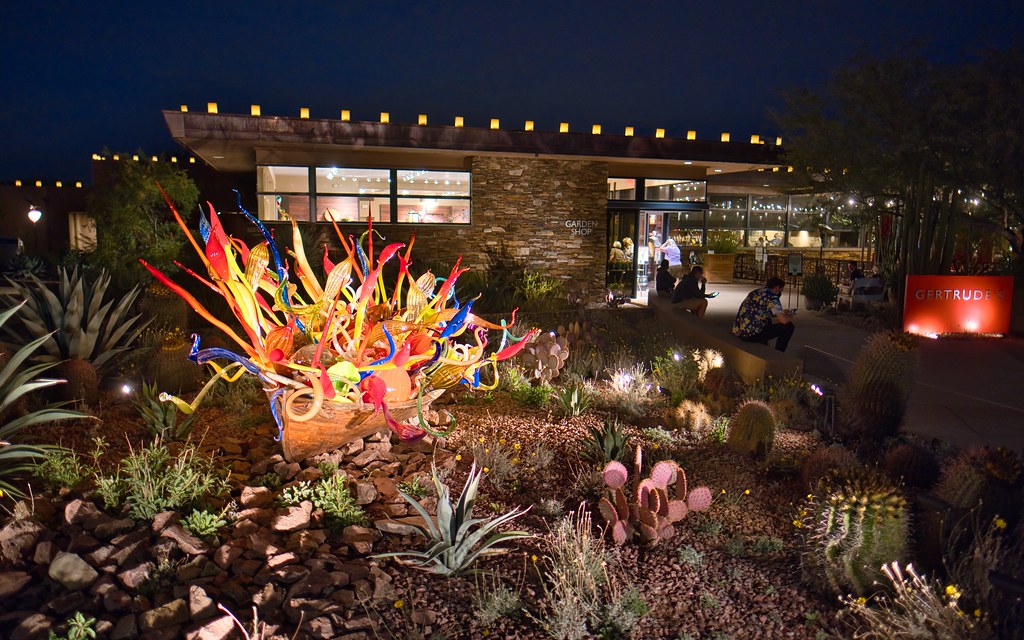
If you’re looking for a more casual dining option, The Patio Cafe offers sandwiches, salads, and other light options. The cafe is situated in the middle of the garden, surrounded by plants and cacti, creating a serene and peaceful atmosphere.
For those that prefer to bring their own food, there are picnic areas available throughout the garden. You can bring your own food and drinks to enjoy a picnic surrounded by the beautiful desert landscape.
Getting to the Desert Botanical Garden
Open from 8:00 a.m. to 8:00 p.m. every day except the 4th of July, Thanksgiving, and Christmas, admission to the Desert Botanical Garden is just $4 for children, $5 for students with ID, and $10 for adults.
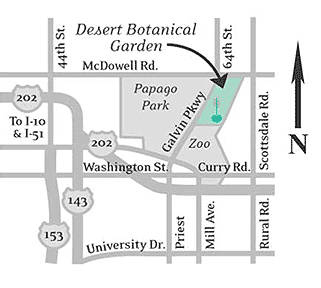
The Garden is located in Phoenix AZ at 1201 North Galvin Parkway, it is in the heart of Papago Park and directly north of the Phoenix Zoo. Easily accessible from Highway 101 and north of Highway 87, the Garden is also a direct destination on Route 3 of the Valley Metro line.
Phoenix Desert Botanical Garden
1201 North Galvin Parkway
Phoenix, Arizona 85008
480-941-1225
Final thoughts
Whether you are a local resident or a visitor from out of town, the Desert Botanical Garden is a place that will inspire you, educate you, and leave you with unforgettable memories. With its endless array of exhibitions, events, and activities, there is always something new and exciting to discover in the garden.
So, pack your camera, put on some comfortable shoes, and embark on a journey of discovery through the Desert Botanical Garden. Whether you are looking for a peaceful retreat or a fun-filled day out with family and friends, this botanical garden is sure to exceed your expectations and leave you in awe of the beauty and wonder of the desert.
We hope you enjoyed our complete guide to the Desert Botanical Garden. This beautiful and unique garden is a must-see for anyone visiting the area or looking for a relaxing and educational day out. With our guide, you should now have all the information you need to plan your visit, including what to expect, what to wear, and what to see. We hope you find this guide helpful, and we can’t wait to hear about your experience at the Desert Botanical Garden!
